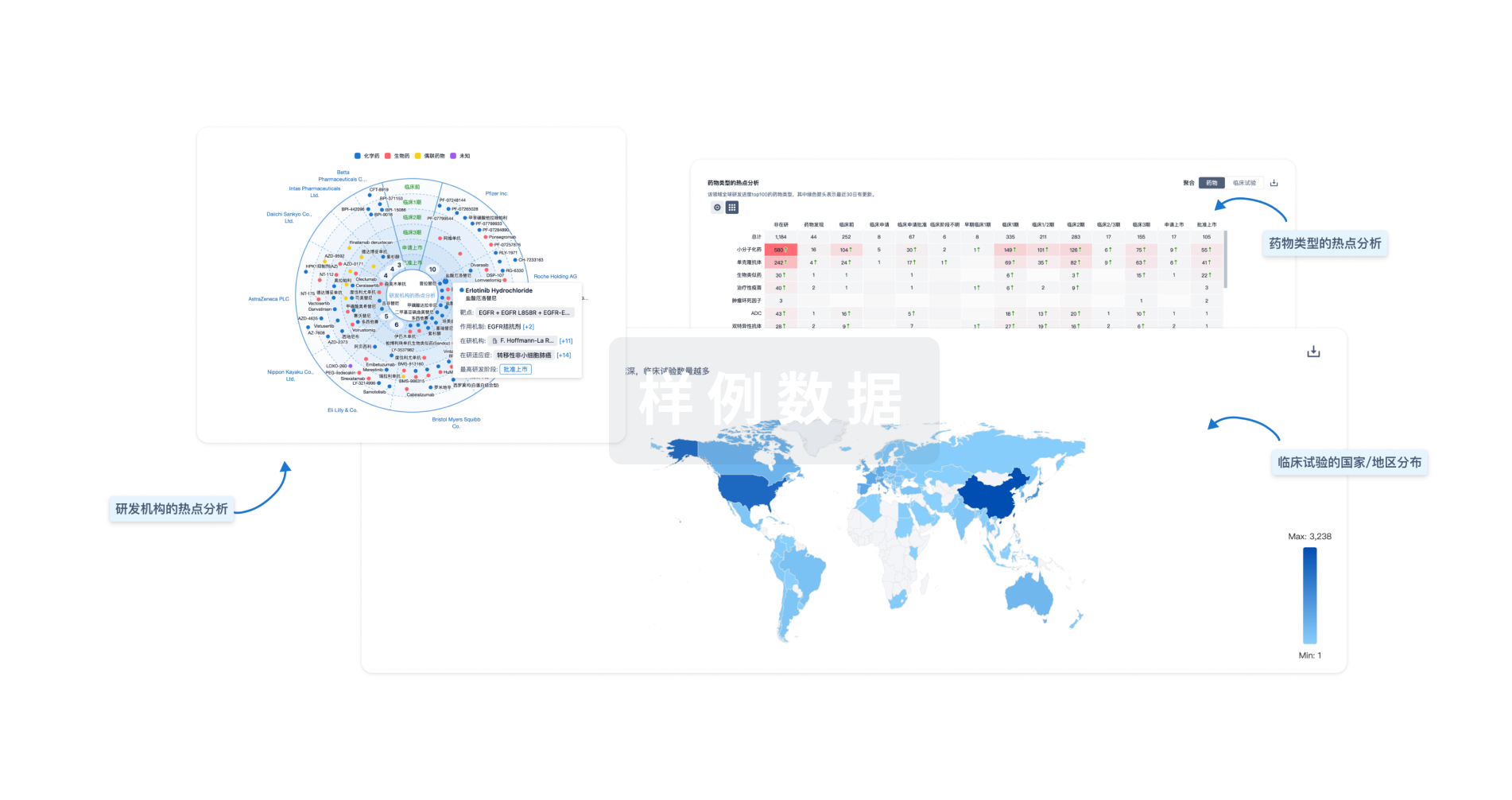预约演示
更新于:2025-05-07
External hemorrhoids (disorder)
外痔
更新于:2025-05-07
基本信息
别名 External Hemorrhoid、External haemorrhoid、External haemorrhoids + [16] |
简介 A hemorrhoid which originates below the dentate line. |
关联
1
项与 外痔 相关的药物靶点- |
作用机制- |
在研机构 |
原研机构 |
非在研适应症- |
最高研发阶段批准上市 |
首次获批国家/地区 中国 |
首次获批日期1983-01-01 |
17
项与 外痔 相关的临床试验IRCT20230129057271N1
A comparative study of the effect of jackknife and lithotomy positions on the process and complications of hemorrhoidectomy surgery
开始日期2023-02-20 |
IRCT20120125008819N3
Investigating the efficacy of herbal ointment (Chamomile and Myrtus) compared to anti-hemorrhoid ointment in the treatment of patients with hemorrhoids in a randomized clinical trial
开始日期2022-11-30 |
NCT06009133
Surgical Excision Versus Medical Treatment in Acute External Thrombosed Hemorrhoidal Disease
Acute external thrombosed hemorrhoidal disease (AETHH) is one of the emergent complications of hemorrhoidal disease that results in pain and loss of work force. Although surgical excision is recommended in the treatment of AETHH in the guidelines of the American Society of Colorectal Surgeons (ASCRS) and the European Society of Coloproctology (ESCP), the level of evidence is low and it is emphasized that additional studies are needed. Therefore, the investigators aimed to compare the efficacy of surgical excision with medical treatment in the treatment of AETHH.
开始日期2022-07-01 |
申办/合作机构 |
100 项与 外痔 相关的临床结果
登录后查看更多信息
100 项与 外痔 相关的转化医学
登录后查看更多信息
0 项与 外痔 相关的专利(医药)
登录后查看更多信息
449
项与 外痔 相关的文献(医药)2025-04-01·Journal of Ethnopharmacology
Network pharmacology combines cellular experiments to investigate the anti-inflammatory phytochemicals of vine of Pueraria montana var. lobata and their mechanism
Article
作者: Tang, Siqi ; Xu, Yi ; Li, Xiaojun ; Sun, You ; Wan, Wenwen ; Wei, Kaixin ; Xu, Rongying ; Huang, Hao
2025-03-19·Pirogov Russian Journal of Surgery
Treatment of acute hemorrhoids according to the results of a multicenter observational study
Article
作者: Alnikin, A.B. ; Shvetsov, V.K. ; Kolesnichenko, A.A. ; Bardakhchyan, V.E. ; Sultanmuradov, M.I. ; Groshilin, V.S. ; Kuznecov, V.D. ; Arkhipov, A.S.
2024-12-25·Zhonghua wei chang wai ke za zhi = Chinese journal of gastrointestinal surgery
[Several problems needing attention in the diagnosis and treatment of common perianal benign diseases].
Article
作者: Gao, C F ; Gao, F
1
项与 外痔 相关的新闻(医药)2024-01-31
上篇文章分析了“按疗效付费”模式在海外市场的发展历程(当“仅退款”模式开始卷向医药行业—上篇:海外实践),本期文章将介绍该付费模式在国内市场的发展现状。中国开展的按疗效付费包括基本医疗保险和商业保险维度。控制医保金使用的包括早期浙江省肝移植手术,少数省市的中医药疗法,以及一些诊断和耗材。商业保险更针对那些医保外高值药品的支付,包括阿斯利康泰瑞沙、百时美施贵宝丙肝疗法,以及此次的CAR-T疗法。肝移植手术中国按疗效付费实践可追溯到2017年,浙江省人力社保厅发文,为减轻肝移植患者医疗费用负担,4家试点医院将从2018年1月1日起对当地户籍患者开展肝移植术基本医疗保险按绩效支付试点,为期5年。肝移植术按“乙类”项目纳入基本医疗保险支付范围,个人自理比例30%,除此之外医保按绩效与医疗机构进行结算。具体有三种情况:≤18岁患者出院时结清个人承担费用,医保按应支付费用的70%结算,患者出院后存活满1年的,医保按应支付费用的20%再次结算;患者出院后存活满3年的,医保按应支付费用的10%再次结算。>18岁患者出院时结清个人承担费用,医保按应支付费用的90%结算;患者出院后存活满1年的,医保按应支付费用的5%再次结算;患者出院后存活满3年的,医保按应支付费用的5%再次结算。此外,患者出院后存活满5年的,医保在预留费用中对医疗机构予以激励。5年期满后,由浙江省省级医疗保险服务中心根据患者生存情况、医疗质量、费用负担等因素对医疗机构进行绩效评价,并予以相应激励。中医治疗随着DRG付费开始试点,部分地区开始在DRG的基础上探索中医的按疗效付费方案。究其原因,主要是由于DRG以西医的诊断和手术名称进行分组,目前还没有成熟的中医诊断分组器,中医诊疗病例只能进入非手术组,其支付标准远低于西医的手术组,无法体现中医特色操作及治疗的价值。作为全国首批DRG试点的30个城市之一,四川省攀枝花市于2020年7月率先实施按中医疗效价值付费。9个传统中医药治疗的病种:血栓性外痔、混合痔、跖骨骨折、趾骨骨折、儿童胫腓骨干骨折、单纯性胸椎骨折、单纯性腰椎骨折、腰椎间盘突出和异位妊娠(输卵管妊娠)按照疗效对应DRG病组等值付费。2021年,浙江省医保局为支持中医发展,对与西医具有相同疗效的中医传统技术予以政策倾斜,形成以中医治疗难易程度、疗效价值为主要内容的评价机制。兰溪市作为浙江省首个试点地区,遴选桡骨远端骨折等10个骨科病种,实施中医按疗效价值付费。改革当年,全市完成相关病种中医治疗214例,结算金额达135.91万元。患者不用手术,医保报销比例不受影响,人均自费费用减少近6000元。浙江省对以中医药治疗为主的病种进行差值补偿,是基于需求侧患者端的支付改革,是对DRG付费办法的完善,其基本思路是中西医同病同效同价,即同一病种,采用中医疗法若能达到与西医手术相同的疗效,则参照DRG的西医手术组标准按比例支付。2022年7月,上海市医保局发布《关于开展中医优势病种按疗效价值付费试点工作的通知》,以中西医同病同效同价和“优势突出、临床成熟、疗效确切、安全可控”为原则,确定“肛痈”等22个中医优势病种作为第一批试点病种开展按疗效价值付费试点,并选择22家中医、中西医结合医院作为首批试点单位。还有湖南、甘肃等省市也公布中医方面的按疗效付费政策。检测项目/医用耗材2021~2022年,上海市医保局先后对6种检测项目和2种耗材实施按绩效支付,检测项目包括:7种微小核糖核酸检测、人工智能辅助治疗技术、肿瘤消融治疗技术(冷冻)、Septin9基因甲基化检测、超选择脑动脉腔内血栓取出术以及机器人X射线立体定向放射治疗;耗材为心脏瓣膜(折叠)和心腔超声导管。每年2月起,对定点医疗机构上一年度开展指定项目或使用相应耗材的,按绩效评价指标进行考核。开展例数少于30例的医疗机构不纳入考核。达到指标要求的,全额支付;未达到指标要求或填报例数低于医保结算例数90%的,根据项目医保支付部分的费用(按项目医保交易金额*医保基金平均支付水平(80%)测算)扣减5%。鉴于国家医保的“保基本”特征,对一些高值药品带来的风险,无法由国家医保承受,因此还需商业保险分担风险。丙肝治疗药创新支付2017年8月15日,第一张“按疗效付费”保单在上海开出。由华泰财险出具的保单对保险期内服用抗病毒治疗药物(百立泽+速维普)的丙型肝炎患者进行承保,入组患者完成一个疗程24周的治疗并随访12周后,如果未能达到治疗,保险公司将补偿被保险人部分购药费用,补偿金额为30000元。2017年4月,百时美施贵宝成人基因1b型慢性丙型肝炎治疗方案——百立泽(盐酸达拉他韦片)联合速维普(阿舒瑞韦软胶囊)获原国家食品药品监督管理总局(CFDA)批准上市,每个疗程患者需自付5~6万元。然而,该保单的投保人并不是购药患者,而是上药云健康,保费800元亦由上药云健康方面支付。保单还拉入了中国目前的第三方检测公司金域检验。金域方面将提供被保险人的HCV基因分型报告、NS耐药突变检测报告和治疗前后3次的HCV-RNA定量检测报告。而这些报告,将成为衡量治疗和理赔与否的直接依据。泰瑞沙创新支付2017年3月,阿斯利康第三代口服、不可逆的选择性EGFR突变抑制剂泰瑞沙(奥希替尼)在中国获批上市。该药是全球第一个上市,也是中国首个获批的用于EGFR T790M突变阳性的局部晚期或转移性非小细胞肺癌的肿瘤药物。当时,该药在国内价格超过5万/月。为促进新药上市销售,阿斯利康推出了慈善赠药计划和分期付款计划,两个方式组合很大程度减轻了患者负担。但尽管泰瑞沙疗效获得了临床一致认可,但不能保证T790M突变患者用药都有效果。在《新英格兰杂志》上发表的一项临床研究显示,仍有13%左右的患者可能在3个月之内病情进展。据此,AZ在肿瘤领域开创性的发布了疗效险:由镁信健康携手华泰保险推出的按疗效付费模式,即T790M阳性的肺癌患者,在使用泰瑞沙4个月(自费购药期)之内出现病情进展、不幸身故的话,则可获得5万元的保险补偿费用。“慈善赠药+分期付款+疗效险”三管齐下,在泰瑞沙上市后的第一年,阿斯利康迅速获得了一定数量的二线治疗患者。2018年8月,泰瑞沙获批一线适应证。同年9月,阿斯利康升级了保险,不再进行慈善赠药和分期付款,仅对疗效险进行了优化:患者用药10个月内发生疾病进展或死亡,最高将得到50%的药费赔付。2019年底,泰瑞沙通过医保谈判进入国家医保目录,价格从51000元/盒降至15300元/盒。之后,阿斯利康再次升级疗效险,联合基因检测公司筛选患者,制定治疗方案,如患者治疗1年后仍出现进展,则赔付医保报销后的100%/无医保报销的50%,并且方案包含了更多阿斯利康的产品。总结医疗服务不同于其他商品买卖,难以做到钱货两清双方满意,如果遇上疑难重症,最坏的情况就是人财两失。为了减轻新药治疗不达预期造成的损失,“按疗效付费”应运而生。如前所述,“按疗效付费”主要是为了分摊风险,让药厂也承担一部分治疗失败的损失。而由于国家医保的职责不同,因此相比国外的风险共担(费用方面)主体是政府和企业,国内的风险共担主要由患者和企业共同负担,尤其对那些国家医保无法买单的高值特药来说更是如此,因此对创新支付方式的呼声日渐高涨。对高值创新药来说,目前更多只能由商业保险公司承保。按疗效付费对于药企来说,有望增加药品销量;对于病人来说,有助于消除他们在用药前的顾虑。而对承保公司来说,设计按疗效付费套餐的前提,除了要有对新药又期盼又顾虑的投保人群体,也要对创新药疗效有充分的信心。但是具体到实际层面,会浮现出更多问题。“ 有业内人士表示,如果医院科室利益和诊疗效果直接挂钩,尽管能在很大程度上激发医生的积极性,但由此也暴露出一些其他方面的问题,例如拒收病情复杂的患者、通过各种手段进行数据造假等,商业保险公司可能也会拒绝为一些人群承保/赔付。”因此,如果要推行按疗效付费模式,就必须建立科学的考核指标,设置完善的奖惩机制。但是,谁来评价疗效?疗效指标如何设定?如果出现纠纷,谁来协调?按疗效付费无法适用于所有病种,如果简单地把“疗效”和“价格”对等起来,认为花钱就要买到对应的效果,一旦不如心理预期,就会衍生更多的麻烦。归根到底,按疗效价值支付方式是多方利益博弈后寻找到的一个平衡点,而这场博弈的规则还需要更长时间的摸索去建立。参考文献:1.https://www.baiji.com.cn/news/baiji_news/2017/0816/318908.html;首张“按疗效付费”的保单长啥样?2.https://mp.weixin.qq.com/s/4NEzGiiCmH-JWJsLHiV03w;全省率先!在攀枝花用传统中医治疗这些病将按疗效付费3.https://mp.weixin.qq.com/s/WuCVLkF8BQvNadNORWpcAA;浙江试点肝移植术纳入医保,个人自理三成!4.https://mp.weixin.qq.com/s/s3ta9eukB_gReJ4cI_CTyQ;中医按疗效付费2年带来新变化5.https://ybj.sh.gov.cn/qtwj/20210414/a4d9d5b7509c4dca99489d6f6fce6e07.html;关于部分诊疗项目试行按绩效支付的通知沪医保医管发〔2021〕14号6.https://ybj.sh.gov.cn/qtwj/20220120/d85cb2c5f04c44cd8fa871b2ad904003.html;关于部分诊疗项目试行按绩效支付的通知沪医保医管发〔2022〕7号7.https://ybj.sh.gov.cn/qtwj/20220519/ad620ec0be714247b43cbf87ca53c7f2.html;关于部分医用耗材试行按绩效支付的通知沪医保医管发〔2022〕19 号8.https://www.163.com/dy/article/F170IIGM05384OHU.html;按疗效付费?肿瘤药居然还能这样做?联 系 我 们投稿 | 发稿 | 媒体合作▶ sylvia.hua@generalbiologic.com数据库 | 咨询服务 | 资讯追踪▶ 点击左下“阅读原文”完成表单填写点击 阅读原文 立即订阅相关报告
细胞疗法免疫疗法
分析
对领域进行一次全面的分析。
登录
或

Eureka LS:
全新生物医药AI Agent 覆盖科研全链路,让突破性发现快人一步
立即开始免费试用!
智慧芽新药情报库是智慧芽专为生命科学人士构建的基于AI的创新药情报平台,助您全方位提升您的研发与决策效率。
立即开始数据试用!
智慧芽新药库数据也通过智慧芽数据服务平台,以API或者数据包形式对外开放,助您更加充分利用智慧芽新药情报信息。
生物序列数据库
生物药研发创新
免费使用
化学结构数据库
小分子化药研发创新
免费使用


